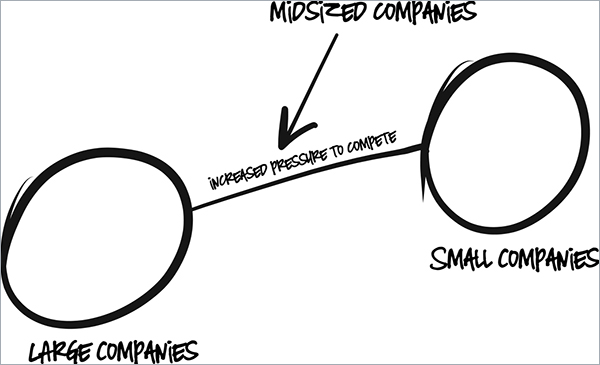In 2005, The Roofing Industry Alliance for Progress commissioned a study called "The Roofing Industry 2025," the idea of which was to imagine what the industry would look like 20 years hence.
One of the report's key findings was what the author called the "barbell effect," suggesting the emergence of an industry composed of very large companies (manufacturers, distributors and contractors) and very small companies—both operating successfully—with increased pressure on midsized companies to compete.

The recent acquisition of the European company Icopal by GAF, Parsippany, N.J., reminds us this prediction is coming true. GAF now is truly an international company with a handful of European brands and about 30 manufacturing facilities outside the U.S.
I recently heard the CEO of a major distribution company predict that in five years 70 percent of distribution will be controlled by three companies.
And we now have three roofing contracting companies in North America with $500 million, plus or minus, in annual sales.
This is not your grandfather's roofing industry.
The question is: Should we be concerned about this unmistakable trend? I think not for a couple of reasons.
First, we've learned midsized companies haven't evaporated. To be sure, super-big companies have distinct advantages when addressing government regulations, for example, or managing human resources issues or having the bonding capacity to take on bigger projects. But being nimble and offering world-class customer service are advantages often enjoyed by smaller firms.
And second, finding and attracting workers is going to be the key to survival and prosperity in the months and years to come. Large companies can perhaps recruit better, but small companies can offer a rapid ascent up the career ladder for those with talent and initiative.
The barbell effect also is affecting associations in the industry. NRCA's challenge is to remain relevant to large and small companies—to do those things they can't do on their own. Increasingly, that involves representing the industry in Washington, D.C., before codes and standards bodies, and with the designer and building owner communities.
As the industry takes on its new shape, it will be increasingly important for us to remember we're all in this together. Barbells, after all, are used to build strength.
Bill Good is NRCA's CEO.



